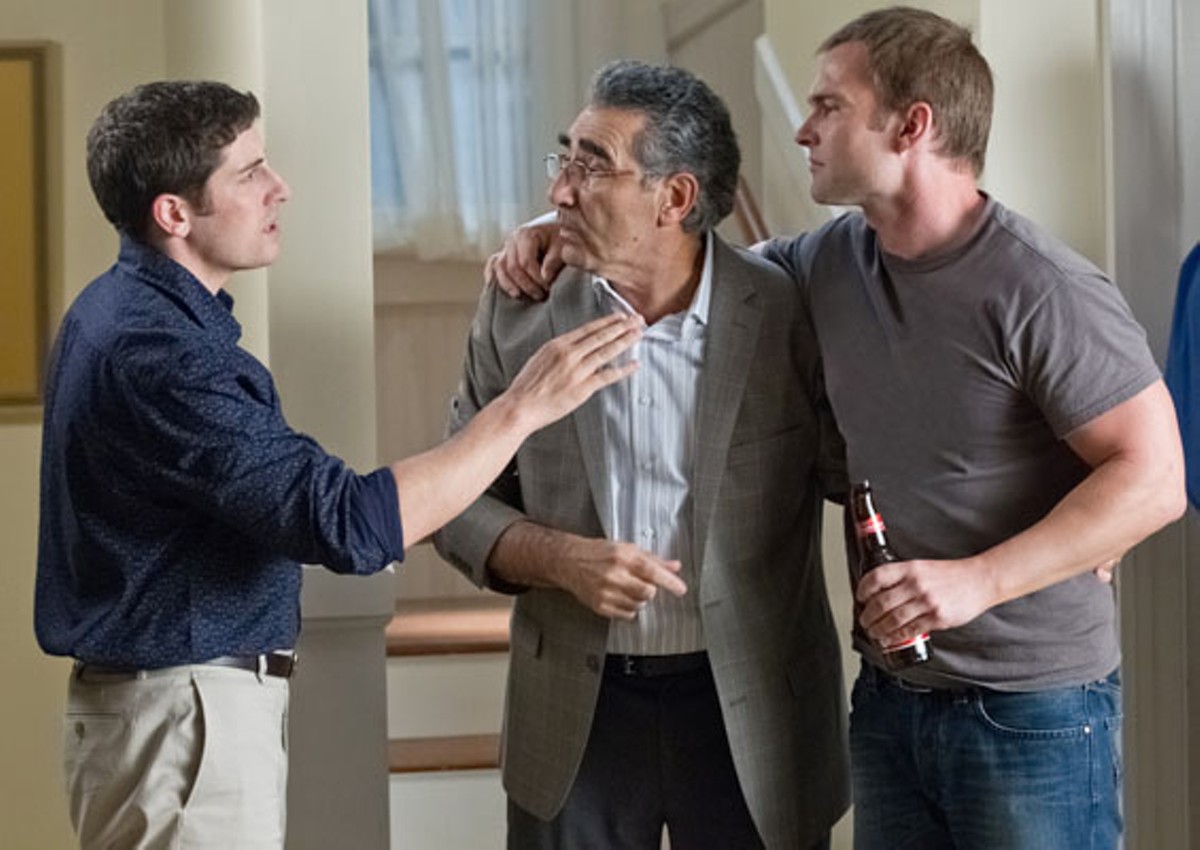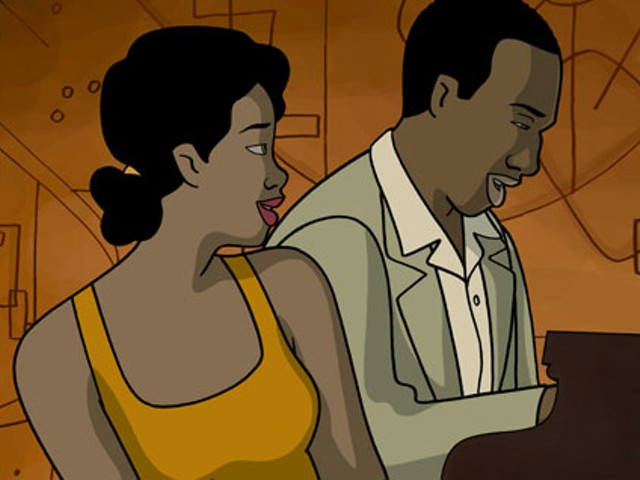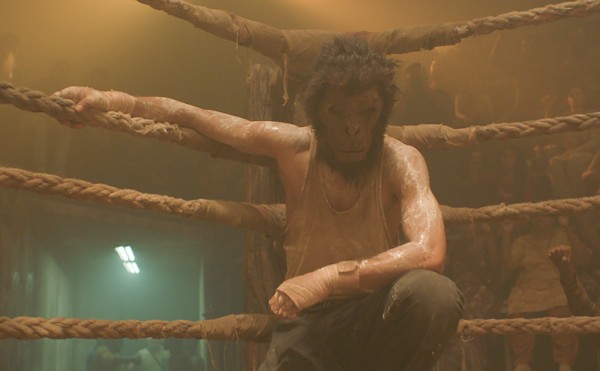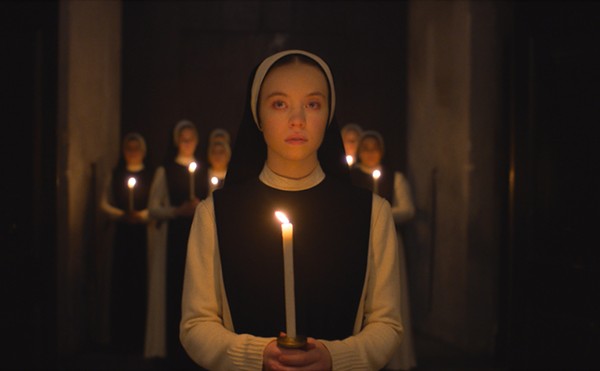A historical romance with a then-unheard-of price tag, James Cameron's 1997 Titanic was the nearest thing to a Gone With the Wind–style cinematic event that the millennials could call their own. Now Titanic has bobbed to the surface yet again in a 3-D re-release, making a play for an audience that its original viewers baby-sat.
Rewatching the affair between Kate Winslet's rebellious haut-monde refugee, Rose, and Leonardo DiCaprio's free-spirited steerage passenger, Jack (as in London), it's hard to find a line that might resonate across generations like a "Frankly, my dear, I don't give a damn." But the power of Titanic didn't come from originality; it came from punching clichés across with a seldom-seen directness and sincerity that seemed pure-of-heart, old-fashioned or plain corny, depending on your perspective.
"Life's a gift," Jack says in a typical homily. "You never know what hand you're gonna get dealt next." The people who release movies, however, like to stack the deck. The ostensible reason for the re-release of Cameron's Titanic is the centennial of the RMS Titanic's abridged voyage. The real reason is that some studio panjandrums have decided that now is the moment in the green-lighting circle of life that this franchise — like Transformers and G.I. Joe before it — is ready to be taken out of mothballs and relaunched for the key teen-to-35 demographic, ideally appealing to one end of that spread through novelty, the other through nostalgia.
Once a very real $200 million gamble, Titanic's sequel-resistant story offered the particular combination of technophilia and technophobia that Cameron, now tweeting from the ocean floor, adores, as author of movies (The Terminators, Avatar) that warn against the hubris of technological arrogance through vanguard special effects.
But CGI spectacle doesn't age gracefully, not even with a 3-D facelift. (Although the spruced-up version was not, in fact, screened for press.) Today, Titanic must float or sink on the enduring charisma of its young stars. Winslet's Rose, flipping an anachronistic bird at the patriarchy, suffers from the "feminist" pandering of Cameron's script, which seems today even more over-deliberate in a pop culture glutted with matter-of-fact warrior-women. What is most remarkable, viewed with the hindsight of nearly fifteen interceding years, is the sight of DiCaprio, famous bangs bounding as he runs through the ship's endless corridors, flashing a sharp little triangle of a mouth and actually smiling. It was Titanic that properly launched "Leo-Mania," which the actor would spend his subsequent career distancing himself from, finding torturous roles to seam his baby face with worry lines, making the leap from matinee idol to Our Serious Actor. DiCaprio has been unusually successful in this aim, but rewatching Titanic, you wish that his growing gravitas had not completely smothered his ability, wonderfully evident here, to convey simple joy.
The French New Wave director Jacques Rivette analyzed the Titanic phenomenon incisively when it first blew up. Citing Winslet as a placeholder for "inhibited, slightly plump American girls who see the film over and over as if they were on a pilgrimage," Rivette concluded that "they recognize themselves in her and dream of falling into the arms of the gorgeous Leonardo." Taking a less weightist view of things, Titanic also offered an immersion in the classical romantic Hollywood cinema — yearning, worshipful close-ups; a transporting score; seismic sentiments — to a multiplex-bred generation that had little familiarity with this idiom, and the experience was intoxicating.
Will a contemporary sixteen-year-old be able to swoon quite the same way for Leo, knowing that Jack has become the burly and brooding DiCaprio of latter years, caked with old-age makeup in J. Edgar, as Robert Pattinson stays eternally young? As for the viewer, like myself, who saw Titanic as a teenager on the first go-round, it is certainly a difficult movie to grow up with, for it has so little use for adulthood. As Kurt Vonnegut noted of A Farewell to Arms, Titanic elides all of the messy stuff of marriage, nipping off the bloom of Rose and Jack's affair while it is still young and perfect — before wilting Rose actually feels the bite of poverty or catches syphilis from one of Jack's Montmartre models. The tragedy of their doomed romance is, then, a Happily Ever After in disguise.
Another defining coming-of-age love story of the Clinton era, 1999's American Pie, has expanded into a saga far more epic — and rather more adult and complex — than Titanic. American Reunion will be the fourth installment of the Pie series, not counting the straight-to-DVD spinoffs, which continued the race-to-the-bottom stakes of gross-out comedy. (American Pie Presents: The Naked Mile was only slightly less transgressive than Salò or the 120 Days of Sodom.)
American Pie adapted the teen-sex farce, à la Porky's, to the enormously successful admixture of shame-based bodily-function-and-dysfunction humor and sentimentality exemplified by 1998's There's Something About Mary. A motley patchwork of high school stereotypes who were, for some strange reason, friends — catastrophe-prone putz Jim (Jason Biggs), sweet stud Oz (Chris Klein) and keg-party satyr Stifler (Seann William Scott) — fought a losing, frequently embarrassing battle with their hormones.
Sequels followed the East Great Falls High kids to college (American Pie 2) and into training-wheels adulthood (American Wedding). This latest episode, handled by the Harold & Kumar writer-director team of Jon Hurwitz and Hayden Schlossberg, brings together the full original cast at the thirteen-year EGFH reunion, as the anticlimactic disappointments of the thirties have begun to sink in. Jim's sex life with onetime band-camp nymphomaniac Michelle (Alyson Hannigan), has gone dry since having kids; B-list talking-head celebrity Oz is mismatched with a party girl, a mistake that becomes glaring when confronted with old flame Heather (Mena Suvari); Stifler is in white-collar clip-on-tie purgatory, still pining to party like it's 1999. (For the sake of this sequel, Stifler's reform in the course of the previous sequel, American Wedding, is ignored.)
As in any reunion, the idea is to recapture a bygone feeling: that is, to echo the Pie films that came before. Jim will engage in awkward birds-and-bees chat with his father (Eugene Levy) and be summarily subjected to public humiliation. Stifler will stay on the shots-and-tits hamster wheel, acting exactly like Stifler. Basic truths about sex and intimacy will be rediscovered and reinforced. Boobs will make an appearance. The character of Kevin (Thomas Ian Nicholas) will continue to be dead weight.
After some strained "Remember the time..." callbacks to thirteen-year-old gags, American Reunion gets comfortable and funny, as Hurwitz and Schlossberg hit familiar marks from unexpected angles, while the ensemble interplay is "routine" in the best sense of the word. Taken altogether, the Pie movies offer a cohesive worldview, showing each of life's stages as the setting for fresh-yet-familiar catastrophes, relieved by a belief in sex, however ridiculous it might look, as a restorative force. The recipe is so durable and the sustained character work — more arrested development than development — so second skin by now, one can imagine the Pie films keeping with the dramatis personae through middle-age and into the problems of geriatric love, a raunch-comic version of Britain's documentary Up series, which revisits the same subjects every seven years: American Midlife Crisis? American Retirement? American Funeral? Let's go!






